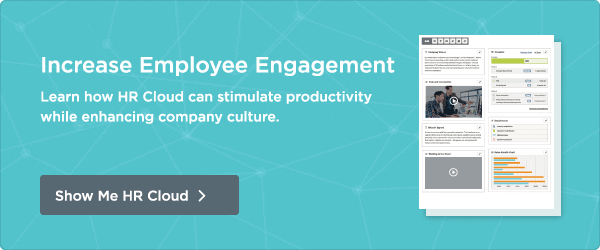

 Cut onboarding time
by 60%—here's the
Ultimate Checklist
that helped do it.
Cut onboarding time
by 60%—here's the
Ultimate Checklist
that helped do it.

Employers have known for some time that employee engagement is essential to the overall financial health of a business. According to a 2013 Gallup poll, 70% of employees are either "not engaged" or "actively disengaged," costing the U.S. between $450 billion to $550 billion each year in lost productivity.
However, it is not just businesses that become "healthy" with increased employee engagement. A 2015 Gallup poll reveals a strong correlation between engagement and employee health as well.
The findings, collected as part of the Gallup Employee Engagement tracking series and Gallup-Healthways Well-Being Index from January 2014 through September 2015, show that workplace engagement does affect employees' physiological state to some degree. Here are some study highlights:
Disengagement leads to increase in "unhealthy" days: Actively disengaged workers, on average, have 2.17 unhealthy days per month, whereas their engaged counterparts have only 1.25 unhealthy days per month.
Disengagement has a greater effect on health than does age: While you might assume that older workers are more likely to experience unhealthy days, it appears that an employee's level of engagement is actually the determining factor.
For instance, employees between the ages of 20 and 29 report 1.82 unhealthy days, on average. Conversely, engaged employees between the ages of 40 to 49 only report 1.28 unhealthy days and engaged employees between the ages of 50 to 59 report 1.57 unhealthy days.
TWEET: A 2015 Gallup poll reveals a strong correlation between engagement and employee health.
Types of health issues vary: When asked about specific health-rated issues experienced in the preceding day, there was a marked divide between engaged and disengaged employees. Poll participants reported the following:
• Physical pain: 23% (disengaged); 14% (engaged)
• Stress: 56% (disengaged); 32% (engaged)
• High blood pressure: 19% (disengaged); 15% (engaged)
• High cholesterol: 15% (disengaged); 11% (engaged)
• Depression: 16% (disengaged); 9% (engaged)
These results indicate a definite correlation between employee engagement and physical health. What does this all mean for your business?
Actionable Intel
Considering the high cost of employee unproductivity and the apparent relationship between engagement and employee health, it becomes imperative for businesses to bolster their engagement strategies.
While much emphasis has been placed in recent years on employee wellness programs in an effort to improve healthcare outcomes and bend the cost curve for employer-sponsored health plans, it may be time to re-focus on employee engagement as a way to enhance those benefits.
According to the National Business Research Institute, there are several things that can be done to improve levels of employee engagement.
On the executive level, the main focus should be on:
• Building trust within the organization from the top down.
• Communicating frequently and clearly with all employees.
• Creating a company culture that nurtures success.
• Coaching and mentoring employees from onboarding forward.
• Building relationships that include trust and mutual respect.
• Maintaining an open dialogue with staff at all times.
• Encouraging employee ownership of behaviors and attitudes.
• Providing clarity of purpose.
• Setting motivating goals and issuing appropriate rewards when they are met.

Keep Reading
45 Boss Day Messages That Actually Mean Something (2026 Guide)
When is Boss Day 2026? Mark your calendar for October 16, 2026 — the annual opportunity
Birthday Wishes for Coworkers: 50+ Messages That Build Workplace Connection
A coworker's birthday isn't just another calendar date—it's a meaningful opportunity to
Embracing Diversity: Recognizing Different Cultures in the Workplace
Workplaces today reflect the incredible diversity of the world around us. People bring
Like What You Hear?
We'd love to chat with you more about how HR Cloud® can support your business's HR needs. Book Your Free Demo

Build a Culture of Recognition. Boost Engagement. Guaranteed.
Workmates empowers employees to stay informed, connected, and appreciated—whether they’re on the front line, in the office, or remote. Recognition drives 12x higher engagement.Trusted by industry leaders in every sector




Cut Onboarding Costs by 60%.
Take the confusion and follow-ups out of onboarding with automated workflows, digital forms, and structured portals—so new hires ramp faster 3X quicker.Trusted by industry leaders in every sector






